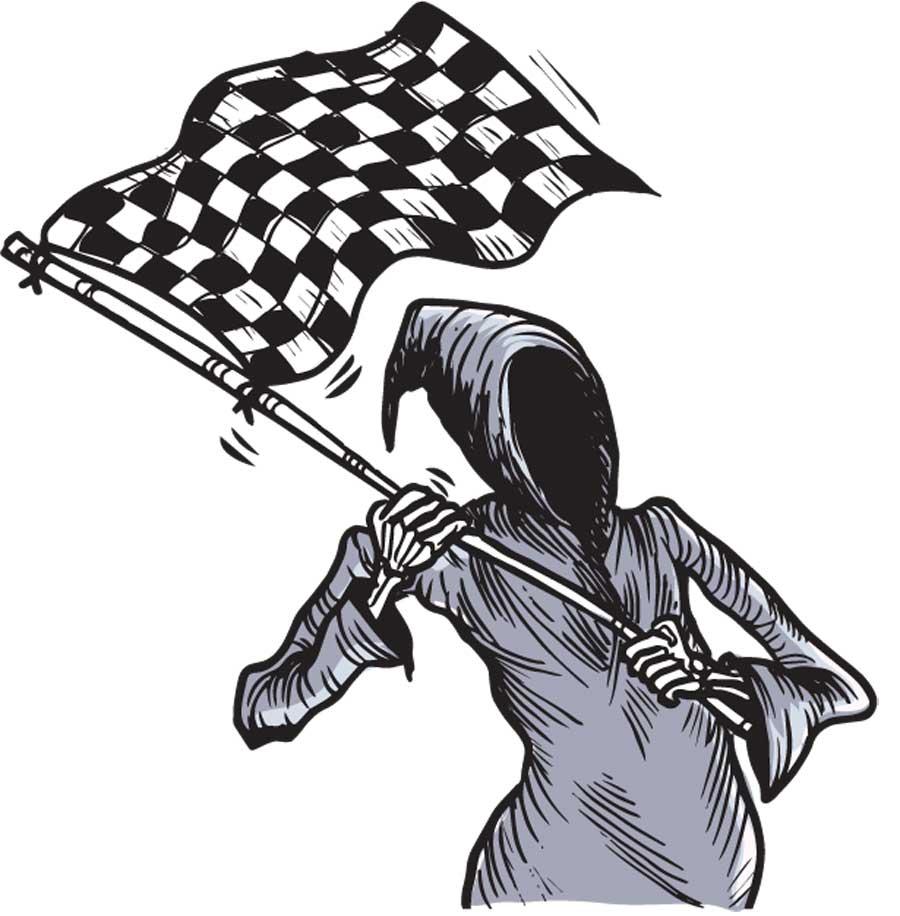Reply To:
Name - Reply Comment

The tragic motor car accident that snuffed out the lives of seven people and injured over 20 people must be reviewed critically. At the time of writing this column only two drivers involved in the accident were initially nabbed and later released on bail. No member of the organizing committee has been arrested so far and this has led to a public outcry on social and online media platforms blaming the organizers.
The public wishes to know why the organizers of the event should go unpunished when there have been deaths and injuries to spectators. Both the Government and the Sports Minister have maintained silence over the incident. Only the Opposition alliance Samagi Jana Balawegaya has demanded to know whether the organizers of the sporting event carry a liability
regarding the tragedy.
There are causes for concern from the perspective of taking responsibility when we read media reports related to the incident and what’s taking place in its aftermath. Lawyers appearing for the racecar drivers have maintained that the drivers had met with the accident because they took part in the race to win. Also the spectators were granted free entrance. This means they don’t have a document-in example a ticket-which specifies what areas they can venture into and who should take responsibility in the event there is an accident. Also questions are asked whether cars driven in the race along with the drivers are subject to the laws specified in the Motor Vehicle Act and the Criminal Procedure Code. Are the cars driven on race tracks insured? When we try to find answers to some of these questions we understand that racecar drivers are privileged in the event there is an issue
on the race track.
The only silver lining in this tragic incident is that the Diyatalawa Police, which are appearing for the aggrieved parties, have maintained that the accident occurred due to carelessness and dangerous driving. For the record as many as over 200 policemen and around 600 army personnel were on duty during the race.
The event was organized by the Sri Lanka Military Academy of Diyatalawa (attached to the Army) with the support of Sri Lanka Automobile Sports (SLAS). Does a defence service institute like the Army have the technical knowledge to conduct a sporting event of this nature? This question is raised by critics because the track on which the race was run seemed to have not been properly watered before that fatal race. This was visible through the footage released on social media and pictures appearing on mainstream media connected to the race. The dust that was kicked up was thick as fog. It probably blinded the vision of the drivers temporarily. Now the matter is in court and the outcome of the case would depend on how the lawyers of all parties present their arguments.
But the organizers of the event cannot be blind to the truths in life and human emotions. Several deaths have taken place on the race track; one among them was an eight-year-old girl. According to newspaper reports the Sri Lanka Army has come forward to provide assistance to the families of those who were killed in the racecar accident. This move must be lauded because the Army was the main organizer of the racing event.
But from a larger perspective this racing car tragedy opens the eyes of all organizers of such events because there is a question on who takes liability at such races given there is a similar incident in the future.
In the event of a ‘death on the racing track’ we have to talk about Ayrton Senna who died in a crash at a Formula One race in 1994. His team was accused of sabotage, but his team’s technical chief was acquitted of all charges when the court ruled that ‘there was no proof of blame’.
The Fox Hill Super Cross must continue, if there are culprits they must be punished and lessons must be learned. But all importantly a race shouldn’t be started before all spectators are well beyond the no man’s land.